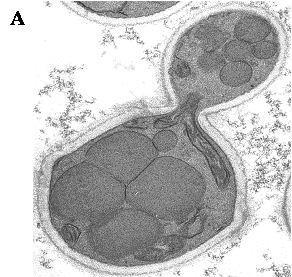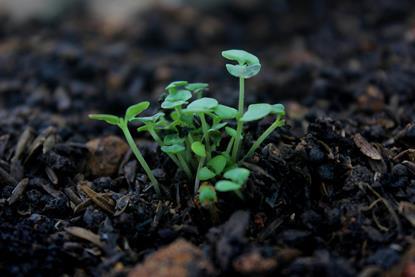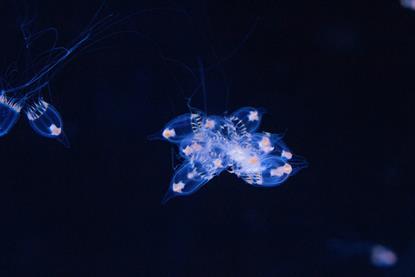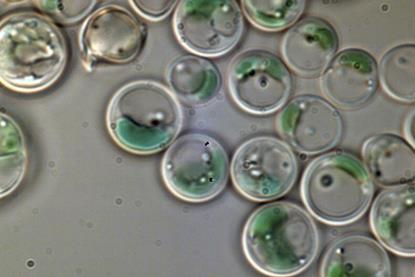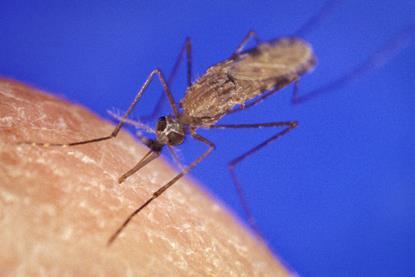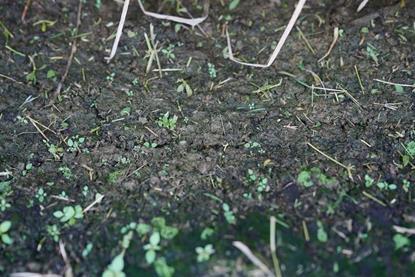Climate action
Today we are seeing climate change in action, increased concentrations of atmospheric greenhouse gases have led to a rise in sea levels, temperatures, and extreme weather patterns. Researchers have acknowledged the pivotal role microorganisms in producing sustainable biofuels, increasing carbon sequestration via soil microbes and reducing methane emissions in landfill sites. Microbial innovation will be vital in moving towards a low carbon economy.
News
Strengthening asphalt roads with a unique green ingredient: Algae
Researchers propose a figurative and literal green solution to improve the durability of roads and sidewalks: an algae-derived asphalt binder. For temperatures below freezing, results indicated that the algae binder reduced asphalt cracks when compared to a conventional, petroleum-based binder.
Read story- News
Breakthrough AI speeds up discovery of life-supporting microbes
Scientists have developed a powerful new artificial intelligence tool called LA⁴SR that can rapidly identify previously overlooked proteins in microalgae - tiny organisms that produce much of the Earth’s oxygen and support entire aquatic ecosystems.
- News
Unseen allies: symbiotic bacteria help clean wastewater, but there is a catch
Scientists have identified new species of denitrifying endosymbionts in wastewater, highlighting their global prevalence – with an unexpected climate implication.
- News
Mutated baker’s yeast at the forefront of petroleum substitute tech
Researchers engineering Saccharomyces cerevisiae to produce 2,3-butanediol (2,3-BDO) introduced mutations into the genomic DNA. The researchers engineered four altered strains and subjected them to ethanol, heat, and low pH stressors.
More Climate change
Features
The smell of the sea: how microbes shape Earth’s sulfur story
That distinctive “sea breeze” scent we associate with the coast isn’t just nostalgia; it’s the smell of microbial chemistry at work. Behind it lies an intricate web of microbial pathways turning sulfur compounds into gases that help shape Earth’s climate.
- News
Yeast cell factory developed to convert methanol into L-lactate
Researchers developed a yeast cell factory to produce L-lactate from methanol as the sole carbon source, and evaluated the commercial potential and environmental impacts of this bioprocess.
- News
New study reveals how natural humic substances reshape soil carbon cycling and boost antibiotic resistance
Researchers have uncovered surprising links between natural humification processes in soil, carbon metabolism, and the spread of antibiotic resistance. Subtle shifts in the composition of humic substances can reshape microbial metabolism and alter the abundance of antibiotic resistance genes.
- News
AFYREN and ESSE Skincare begin partnership to offer 100% natural cosmetic solutions with enhanced skincare performance
AFYREN, a greentech company offering manufacturers biobased, low-carbon ingredients through a unique fermentation technology, and South Africa-based Esse Skincare, a leader in microbiome skincare science, are partnering to introduce the world’s first bio-based propionic acid for the skincare industry.
- News
Climate extremes triggered rare coral disease and mass mortality on the Great Barrier Reef
Marine biologists have identified a devastating combination of coral bleaching and a rare necrotic wasting disease that wiped out large, long-lived corals on the Great Barrier Reef during the record 2024 marine heatwave.
- News
Volcanic eruptions set off a chain of events that brought the Black Death to Europe
Researchers have used a combination of climate data and documentary evidence to paint the most complete picture to date of the ‘perfect storm’ that led to the deaths of tens of millions of people, as well as profound demographic, economic, political, cultural and religious change.
- News
‘Creeping catastrophe’: Climate change is driving global rise in infectious diseases, leading health experts warn
Infectious diseases such as malaria, dengue, and tuberculosis are considered to pose as great a challenge to global health as new or emerging pathogens, according to a study. Participants reported that climate change, poverty, and drug resistance are combining to create an escalating health crisis.
- News
Biochar boosts hydrogen and methane yield in next-generation food-waste-to-energy systems
A research team has demonstrated that adding biochar to two-phase anaerobic digestion systems can significantly increase hydrogen and methane production from food waste, while maintaining system stability under high organic loading rates.
- News
The mystery of the missing deep ocean carbon fixers
New findings challenge the current view of how carbon dioxide is “fixed” in the sunless ocean depths. The study presents results that help to reconcile discrepancies in accounting for nitrogen supply and dissolved inorganic carbon (DIC) fixation at depth.
- News
Microalgae could play key role in bio-based circular economy
With food systems under pressure from climate change, geopolitical instability, and supply chain vulnerabilities, the EU is driving innovation toward more sustainable, resilient, and local production models. Microalgae have emerged as a promising resource for producing ingredients across food, feed, and other consumer goods.
- News
US- & Argentina startup Michroma wins €250k investment with The Future is Fungi Award 2025
A new frontier in biotechnology just crowned its next pioneer. Out of 187 groundbreaking startups from 59 countries, Michroma wins the The Future is Fungi Award 2025, taking home €250,000 / USD 289 000 in investment.
- News
Acid rain may be training soil bacteria to become more deadly
Acid rain from fossil fuel pollution may be quietly training soil bacteria to become longer-lived, more transmissible, and more deadly, according to a new study that tracks how a notorious foodborne pathogen rapidly evolved under simulated acid deposition.
- News
Researchers warn: Climate change could expand habitats for malaria mosquitoes
A new study shows that future climate change could create more favourable conditions for malaria mosquitoes, exposing millions of people across large parts of Africa to more dangerous mosquito bites.
- News
Oceanographers present new conceptual framework to answer age-old question: What happens to carbon as it sinks through the ocean?
New research spanning multiple ocean regions has found upper ocean ecosystem conditions, such as nutrient availability and microbial interactions, play a major role in shaping the composition of carbon-rich particles sinking into the deep ocean.
- News
New study reveals how a common antibiotic disrupts nitrogen cycling and boosts greenhouse gas emissions in estuaries
Antibiotics may have far reaching impacts on wetland chemistry, according to a new study that identifies the bacteria responsible for breaking down the antibiotic sulfamethoxazole and links this process to increased emissions of nitrous oxide, a potent greenhouse gas.
- News
Marine viruses use ‘hijacked’ genes to take over bacteria and exploit their energy systems
Marine viruses deploy a sophisticated Trojan horse maneuver that enables them to dismantle the energy systems of ocean bacteria and use the breakdown products for self-replication, according to a new study.
- Opinion
We couldn’t get people interested in science - until we started speaking their language
In 2020, Puerto Rico faced a misinformation crisis. Melanie Ortiz Alvarez De La Campa reveals how five STEM undergraduates created a sci-comm organization that helped pass legislation, educated thousands, and created an inclusive database of Caribbean scientists.
- News
Soil carbon decomposition varies vastly, holding implications for climate models
A new study shows that even under uniform laboratory conditions, the rate of organic carbon decomposition in soil samples collected across the U.S. differed by up to tenfold, in part due to variations in soil mineral and microbial properties.
- News
The road ahead: why conserving the invisible 99% of life is fundamental to planetary health
A new paper outlines how scientists came together to put together the first microbial conservation roadmap under the leadership of Applied Microbiology International President, Professor Jack Gilbert.





